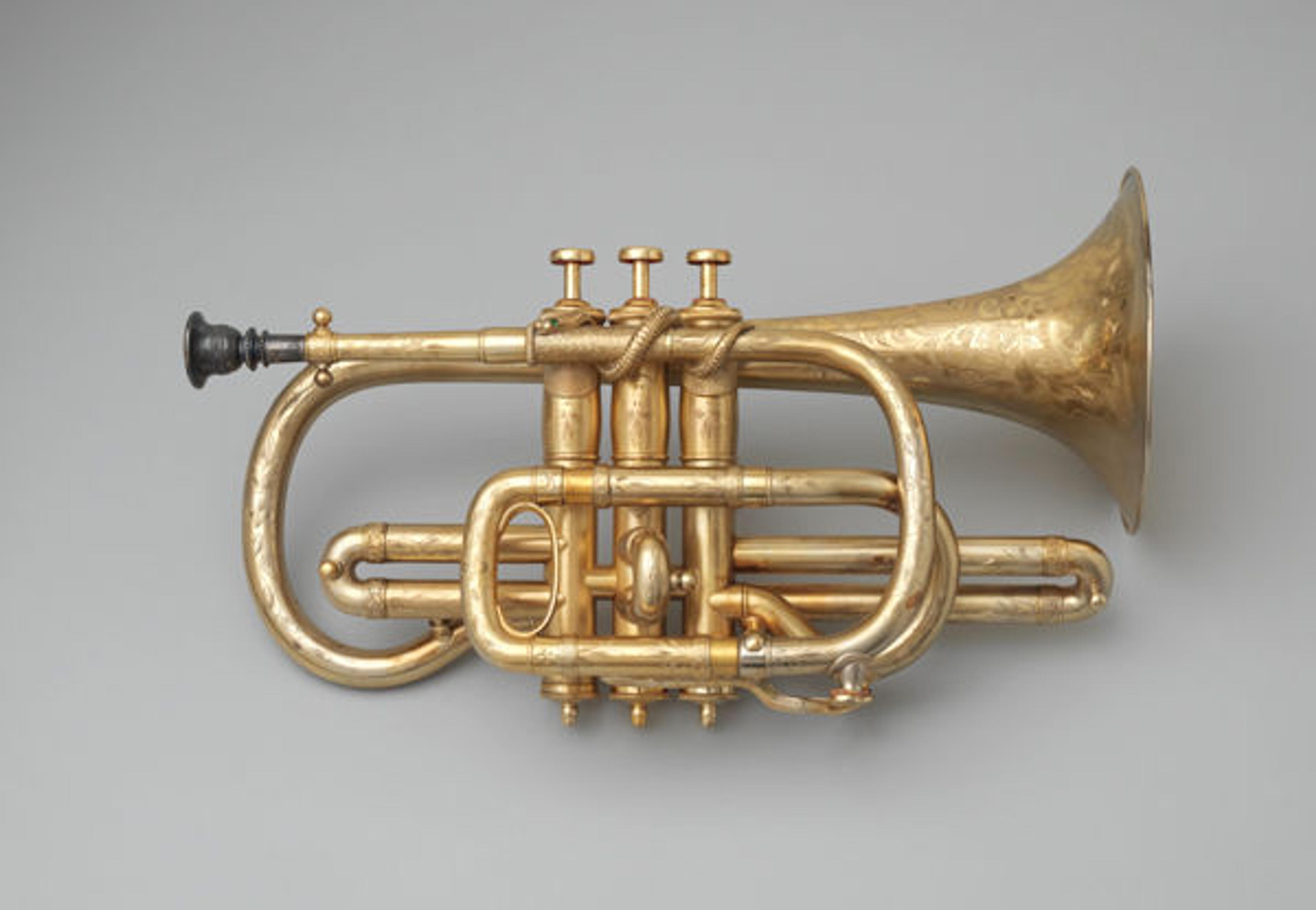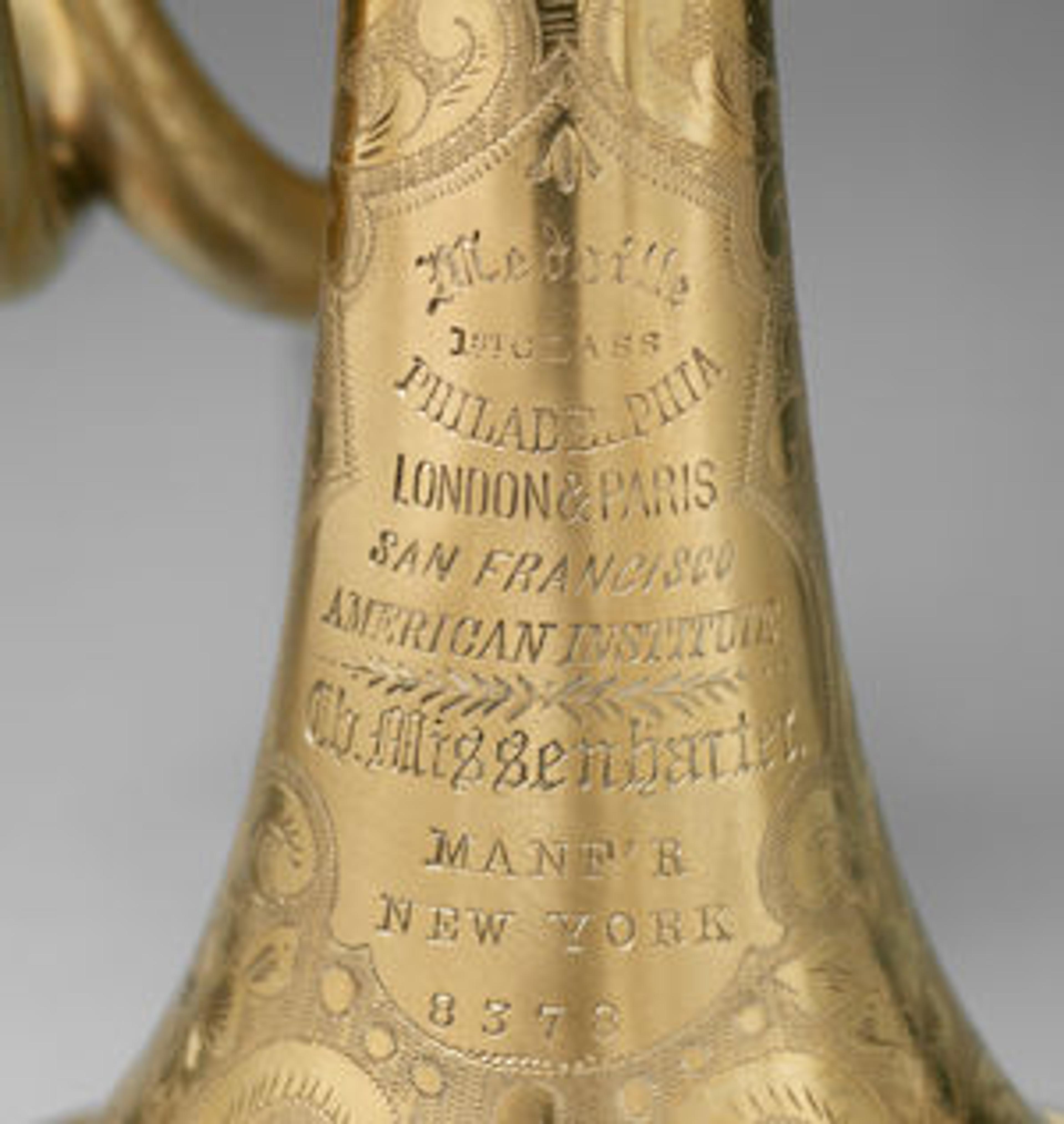
Karl Moritz Missenharter. Cornet, ca. 1900. New York, United States. Brass, gold plate. The Metropolitan Museum of Art, New York, Purchase, Schonberger Family Foundation Gift, 2013 (2013.267a–j)
«This lavishly embellished cornet evinces the instrument's position as the most popular brass instrument of virtuoso soloists and band leaders throughout the late nineteenth and early twentieth centuries. The cornet first appeared in Paris in the 1820s and incorporated valves, invented only a few years earlier, into its design. This enabled the instrument to be played chromatically and with a strong, even tone throughout its entire range—a marked contrast to the natural trumpets and keyed bugles in use at the time.»
Because of its technical facility, the cornet rapidly became the solo voice of brass bands and concert bands in Europe and the United States. Virtuoso cornet soloists headlined music concerts of lighter fare, toured extensively, and enjoyed international celebrity. The cornet was also the brass instrument of choice for early jazz musicians such as Buddy Bolden, Joe "King" Oliver, and Bunk Johnson. It remained popular with players even after Louis Armstrong established the trumpet as a jazz instrument, and is still often heard in jazz combos today.

This cornet, the work of New York–based instrument maker Karl Moritz Missenharter, is reminiscent of the instruments that were often presented to celebrated virtuosi and band leaders. Its gold-washed surface is a tour de force of decorative techniques, and includes engraving, embossing, and surface treatments such as mirror burnishing and frosting. The presence of all of the instrument's original shanks, mouthpieces, matching engraved mute, cleaning rod, grease pot, and distinctive leather case is exceptional.
Left: The cornet's bell, engraved with Missenharter's name and accolades
Missenharter began his instrument-making career in Ulm, Germany, before setting up shop in New York. The configuration of this instrument, with its iconic "shepherd's crook" back bow, mirrors the instruments made by famous French makers such as Besson and Courtois. Missenharter's German heritage is evident in the jewel-eyed serpent twined round the crook receiver, a popular embellishment that often adorns nineteenth-century trombones by German makers.
The gift of this cornet to the Museum by the Schonberger Family Foundation will be celebrated in a free gallery concert by the Kirk Knuffke Jazz Quartet on Wednesday, March 4, at 2:30 p.m. A brief tour of The André Mertens Galleries for Musical Instruments immediately follows the concert.

Detail view of the jewel-eyed serpent wrapped around the cornet's valves, a popular embellishment of nineteenth-century German brass instruments